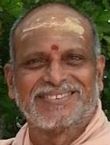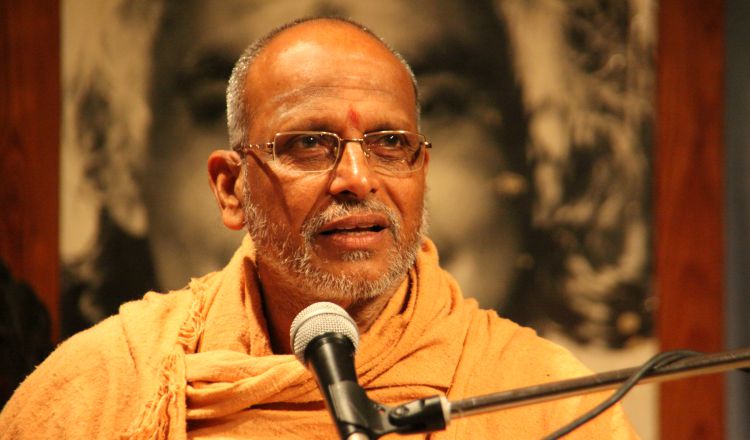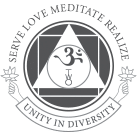Sivananda Bahamas Blog
Expand Your Horizons …
Our Blog
What is Vedanta? Q&A with Swami Medhananda Puri
Swami Medhananda Puri is a distinguished traditional teacher of Vedanta and a regular presenter at the ashram. In this Q&A, he offers responses to a few basic questions about Vedanta (also called Advaita Vedanta).
Question: What is the core of Advaita Vedanta?
Answer: The end portion of Vedas, called the Upanishads is Vedanta. Adi Sankaracharya wrote bhashya (commentary) on the ten principal Upanishads of Advaita (There is no second). They all teach that the Jeeva Atma (individual soul) is no other than the Brahman (all-pervading Consciousness).
Every individual experiences light in one’s dreams despite the fact that eyes are closed, because that the light is coming from Self-effulgent Atman. When a man is in deep sleep, his mind, sense organs, and body are not active. But after waking up, the individual says that he slept well and he does not know anything. This experience comes from the Consciousness alone and not from the matter. This proves the fact that his core is Consciousness. In sleep, the mind becomes subtle and pervades the whole body like fire in the unburnt firewood.
With this experience also it is proved that the Self is full of Consciousness, and It reflects on the mind, sense organs and the body, which are matter. Mind becoming strong or weak depends on the intake of food. So, mind is changing. A changing thing is never permanent, according to physics. This proves that the mind is also matter. While the center of all-pervading Consciousness in an individual is in the body, the circumference is nowhere, the centre of Brahman is everywhere and circumference is nowhere, as told by Swami Vivekananda. Only one Chaitanya (Consciousness) is everywhere in all the beings, at all times, and yet beyond space, time, and causation. It alone is real, whereas the world is unreal.
By cleansing the mind, one experiences the all-pervading Consciousness. In sadhana (spiritual practice) one impression only, i.e., “I am Brahman,” should pervade the mind. If that one thought that “I am Brahman” remains steady for some time, the mind merges into Consciousness. At that stage, the individual gets samadhi (no-mindness) and is realized. He may drop the body within 21 days after this experience. Fire without fuel is unimaginable. Take a small firewood, burn it and you will see fire, and when fire extinguishes, firewood disappears. Firewood with fire is compared with the single impression of the mind, i.e.,” I am Brahman."
When the mind merges into Consciousness, the individual experiences the highest happiness existence, knowledge, bliss-absolute, and sorrow and delusion disappear. Mind, senses, and the whole world are superimposed on the Self. As the world is transitory, it is unreal. This is the gist of Vedanta.
Q: What separates it from other religions, beliefs, or ways of seeing the world?
A: The Brahman, which is all-pervading, having no form or qualities, is considered as Atman. The Gopis of Brindavan always entertained one predominant thought: that they themselves are Lord Krishna. Adi Sankaracharya said “I am Brahman.” Goddess Lakshmi had to rain gold goose berries at the request of Adi Sankaracharya for the poor devotee, who could offer only a dried goose berry to him as alms.
In addition to experiencing the Lord everywhere, in Advaita philosophy, we worship all the elements, trees, shrubs, animals, reptiles, mountains, rocks, etc., i.e., complete equanimity with the nature. The planet earth, rivers, cows etc. are worshipped as Goddesses and Mother. In yajnas and homas, fire is worshipped. Mountains (Govardhana, Kailash) are also worshipped. The Hanuman is worshipped as the son of God Air. The fig tree and tulsi shrub are also worshipped. Almost all the birds, reptiles, and animals are worshipped as the vehicles of Gods and Goddesses. Equanimity in nature and seeing the same God in everything, everywhere and in everybody is called Advaita.
Swami Vivekananda says “one single coat is not suitable for all the people of London.” Other ways or religions rest only on one super human being, like Buddha. Seeing God within and everywhere and everything separates Advaita from other ways or religions. Advaita followers consider the world as unreal, because at the time of death, nobody takes anything along with him, except the fruits of one’s own actions. While sleeping and dreaming also, nobody takes anything along with him. The happiness comes from within. So Advaita says, everything is within. The outside world is only a reflection of one’s mind. If you can merge the mind in Self through meditation, you will get the highest happiness and full knowledge.
Q: How can followers of Vedanta apply it to their daily lives?
A: In meditation, one should cogitate on the oneness or equanimity, thinking that one Consciousness is all-pervading and in that everything else is superimposed. In day-to-day life, one should see God in everywhere, everything, and everybody and act accordingly. While serving others, one should not get egoistic and selfish or expect something in return. One should accept happiness and sorry with equanimity having full faith in one’s ability and the dictum of the shastras (scriptures) to plunge into action.
Q: How can Advaita Vedanta be used by those seeking spiritual awakening?
A. The works of Sri Adi Sankaracharya should be read widely and intensively. If this is not possible, everybody should at least read the Bhagavad Gita well, and practice the noble thoughts contained in it scrupulously.

Swami Medhananda Puri is a distinguished traditional teacher of Vedanta. In 1979, he joined the Kailash Ashram in Rishikesh, India, where he was initiated into the Kailash monastic order. Over the years, he served as acharya at the ashram and in 1987, he was promoted to Treasurer and Manager. He has mastered the Vyakaranam, Mimamsa, Nyaya, Sankhya sastras, Advaita philosophy, Bhagavad Gita, ten principal Upanisads, and Brahmasutras. A teacher of teachers, many of his students have become acharyas who are now teaching around the world.









One thought on “What is Vedanta? Q&A with Swami Medhananda Puri”
glenna pfeiffer
Hi, This is just what I needed today, I am working on writing about meditation, art and the elements. I have studied many religions and I still believe all life is a play of divine love. I was there in 2012 taking a yoga therapy course and heard Swami Puri, I wanted to learn more from him. I wanted to take my 500 level from you and I need to. I find it hard to put it into words the transfer of consciousness and that plane of energy. I live in KY and feel I need to move, they are cutting off the top of mts. for coal, dumping mercury in our water etc. the elements need help, I believe the elements on the outside effect the elements on the inside of our bodies. Thanks, G